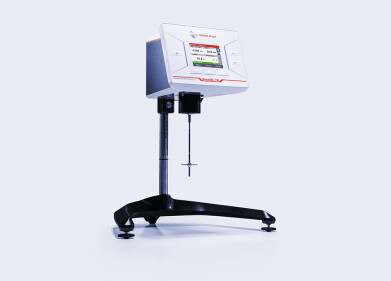Analytical instrumentation
Economic Monitoring of Uranium in Drinking and Mineral Water
Nov 13 2008
expensive analytical instrumentation. In contrast, adsorptive cathodic stripping voltammetry (AdCSV) using Metrohm`s 797 VA Computrace is a straightforward, much less expensive alternative allowing measurements with superior sensitivity.
Uranium is radioactive, toxic and a suspected teratogen. While different national health authorities prescribe limits in drinking water ranging from 0 up to 10 ìg/L, the World Health Organization (WHO) recommends a concentration limit of 15 ìg/L.
The AdCSV method for the voltammetric determination of the uranium content is based on complexing U(VI) with chloranilic acid (CAA)
at a pH between 1.8 and 2.5. After preconcentration of the uranium-chloranilic acid complex at the working electrode, the uranium content
can be determined down to the ng/L range by using the differential pulse measuring technique (DP). The determination of uranium(VI) is
specific and selective, as the positive deposition potential means that other metal-CAA complexes or organic matrix components of natural
waters are either not adsorbed on the working electrode or hardly adsorbed at all. The German standard DIN 38406-17 is currently being
drawn up based on this AdCSV method. This means that in future the voltammetric determination of uranium can be used as a generally
recognised method for monitoring drinking and mineral water in daily practice.
Digital Edition
PIN 25.5 Oct/Nov 2024
November 2024
Analytical Instrumentation - Picturing Viscosity – How Can a Viscometer or a Rheometer Benefit You? - Sustainable Grease Formulations: Evaluating Key Performance Parameters and Testing Method...
View all digital editions
Events
Jan 20 2025 San Diego, CA, USA
Jan 22 2025 Tokyo, Japan
Jan 25 2025 San Diego, CA, USA
SPE Hydraulic Fracturing Technology Conference and Exhibition
Feb 04 2025 The Woodlands, TX, USA
Feb 05 2025 Guangzhou, China



















